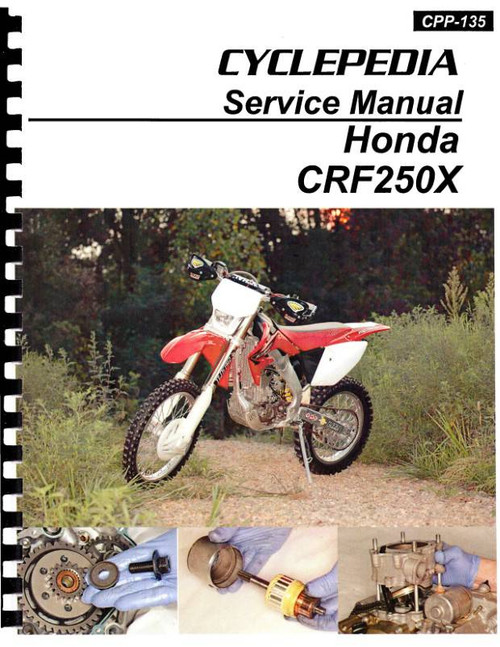No book in the world andmdash; regardless of the quality of the writing andmdash; has the ability to turn an unskilled wannabe mechanic into a skilled one, overnight. However, the Motorcycle Basics Techbook (2nd Edition), by Haynes, explains in easy-to-understand language how each motorcycle or scooter component works, and what role they play so that the machine runs properly. The book makes no assumptions as to whether the reader has had any previous mechanical training, and thus, all the techincal terminology used in the manual is explained and spelled out in the Glossary at the end of the book. If you desire to understand how motorcycles and scooters work so you can perform basic maintenance, service and repairs on it, this is the book for you!
Book Excerpt: Haynes Motorcycle Basics Manual 2nd Edition FUEL SYSTEM AND EXHAUST
FRONT SUSPENSION AND STEERING
Subject: Haynes Motorcycle Basics Manual: motorcycle and scooter service, maintenance, repair. ISBN-10: 0857339982 | ISBN-13: 9780857339980 | Haynes 3515
Book Excerpt: Haynes Motorcycle Basics Manual 2nd Edition FUEL SYSTEM AND EXHAUST
FUEL INJECTION | PRINCIPLES OF OPERATION The term fuel injection is used to describe any system in which the fuel is pumped out under pressure to mix with the air supply. An ideal injection system must supply to the engine a quantity of vaporized fuel which is correct to suit the engine speed, the engine load, its operating temperature, and atmospheric conditions, to ensure optimum performance. An electronic fuel injection system is able to achieve this by the rapid and accurate assessment of information received from various sensors fitted to the engine, and by responding automatically to the slightest change. Information concerning engine load (air flow into the engine), engine speed, crankshaft angle, air temperature, engine temperature, throttle position and air density is collected by sensors and relayed to the electronic control unit. The control unit uses this information to calculate the required opening time of the fuel injectors and thus the quantity of fuel supplied, and sends the equivalent electrical pulse to each injector. As the injector opens, pressurized fuel is sprayed around the inlet valve, where it mixes with air and vaporizes, before entering the cylinder where it is compressed and ignited. Of all the information collected by the sensors, the sir flow into the engine cylinders is the major controlling parameter for fuel metering.
FRONT SUSPENSION AND STEERING
UNSPRUNG WEIGHT | WHAT IS IT AND WHY IS IT IMPORTANT? The weight of the components supported by the suspension is classed as sprung weight, whereas the weight of those components not supported by the suspension is "unsprung weight." Note that the tires absorb a certain amount of shock, and in this context it could be said that the entire weight of the motorcycle is sprung. To understand unsprung weight imagine a motorcycle held upright, off its stand. A person sits on the motorcycle, and the springs compress as the rider?s weight is taken. All the components on the motorcycle that move when the rider sits down and the springs compress have sprung weight ? they move with the suspension (fuel tank, seat, frame, engine, etc). All the components that do not move have unsprung weight (wheels, tires, brakes, etc.) Which begs the question: what about the swingarm, the shock absorber and the forks ? are they sprung or unsprung? For the sake of argument, it is accepted that any part of the swingarm that is to the rear of the shock absorber mounting is unsprung, and the part that is ahead of the mounting, i.e. between the mounting point and the swingarm pivot, is sprung; the bottom half of the shock absorber is unsprung, and the top half is sprung; the fork lower leg or slider is unsprung, the inner tube or stanchion is sprung.
WHY IS LOW UNSPRUNG WEIGHT IMPORTANT? When a bike hits a bump, the unsprung components gain momentum as they start to move ? the higher the unsprung weight, the greater the momentum. The momentum developed by the unsprung components increases the loading on the suspension and harder suspension springs are needed to cope with it. Also, more force is transmitted up the springs to the sprung parts of the bike, affecting their operation. A similar situation occurs when the unsprung components drop into a pothole.
Subject: Haynes Motorcycle Basics Manual: motorcycle and scooter service, maintenance, repair. ISBN-10: 0857339982 | ISBN-13: 9780857339980 | Haynes 3515
TABLE of CONTENTS:
- Introduction
- About this book
- Acknowledgements
- Safety first!
- Engine
- Fuel systems and exhaust
- Ignition
- Transmission
- Engine lubrication and cooling
- Wheels, brakes and tires
- Front suspension and steering
- Rear suspension
- Frames and handling
- Electrics
- Technical terms explained










